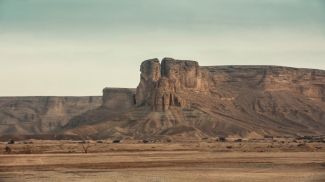BEIJING, 5 April (BelTA - China Daily). - An unusually explicit picture is one of the treasures found in a mountain resting place for the dead in Sichuan province, Huang Zhiling and Huang Leran report.
Visitors to the Palace Museum in Beijing may be surprised with a stone carving of more than 1,800 years ago that portrays a naked man and a woman hugging and kissing. The carving, 49 centimeters tall and 43 centimeters wide, and commonly referred to as "the first kiss under heaven" appears unusual because it was made during the Han Dynasty (206 BC-AD 220) when personal intimacy was generally kept very private.
The carving, one of China's earliest portrayals of sex in art, was first shown to visitors in 2015 when the Palace Museum celebrated the 90th anniversary of its founding.
It was excavated in the town of Jiangkou, in Pengshan county, Sichuan province, in 1942 during the War of Resistance Against Japanese Aggression (1931-45) when the Institute of History and Philology, Academia Sinica and the Preparation Department of the National Central Museum in Nanjing, Jiangsu province, which was the seat of the Kuomintang government, and the Society for the Study of Chinese Architecture in Peking moved to Sichuan to take refuge from the war.
An archaeological team consisting of staff of the three institutions worked on cliff tombs in Jiangkou and excavated many cultural relics including the stone carving.
The carving was kept in the Nanjing Museum, whose predecessor was the Preparation Department of the National Central Museum, and later found its way into the Palace Museum, says Zeng Yuzhen, a guide in Pengshan, now a district under the administration of the city of Meishan in Sichuan.
During the Han Dynasty lavish burials were fashionable, which was closely linked to the social advocacy of filial piety for seniors and prevailing views on life and death.
Under the influence of the thought of "the soul being conscious "and "lavish burial manifesting filial piety", the dynasty attached importance to the form of funerals and burials, and the idea of lavish burials for late seniors spanned the entire dynasty.
Pengshan's wealthy residents ordered the boring of tombs into the sides of cliffs in Jiangkou during the dynasty. Several of Jiangkou's 4,580 cliff tombs are housed in a museum in the town, the museum curator Wu Tianwen says.
Every multi-chamber tomb contained a ceramic or stone coffin, and a kitchen and closet carved from rock.
Recovered relics from cliff tombs include a 1.44-meter-high bronze money tree. On it are characters in ancient Chinese mythology, birds and coins for leaves.
It is believed to be the largest money tree with the most exquisite foundry work and the richest decoration unearthed from a Han Dynasty cliff tomb. When the tree was on display in Japan in 1986 it caused a sensation, Wu says.
Within walking distance from the cliff-tomb museum is the Minjiang River, a tributary of the Yangtze River. Across the river, on the delta at the confluence of the Minjiang and Fuhe rivers, construction of a museum with investment of 500 million yuan (nearly $79 million) or more started in late 2020.
The museum, due to be completed within three years, will house relics pertaining to Zhang Xianzhong (1606-47), leader of a farmers' uprising during the Ming Dynasty (1368-1644). The relics were sunk in the Minjiang River 376 years ago after Zhang's army was ambushed by Ming troops in 1646.
Zhang, a native of Shaanxi province, captured Chengdu, capital of what is today Sichuan province, and declared himself emperor in 1644. Two years later he deserted the city and planned to move to neighboring Hubei province.
His troops were ambushed on the Jiangkou section of the Minjiang River by Yang Zhan, a Ming general, who set Zhang's boats on fire. About 1,000 boats sank with the wealth he had looted from governments and commoners.
For nearly 400 years a legend persisted that Zhang's gold and silver sat at the bottom of the river.
In 2011, workers found many gold and silver items and coins while digging sand for construction purposes in the Jiangkou section of the Minjiang River, and the discovery enticed treasure hunters.
In 2016, police found that 10 gangs of illegal relics excavators and nine illegal relics-trading networks had sold artifacts from the site with a value of 300 million yuan.
This prompted archaeologists to undertake inland China's first underwater archaeological expedition, says Lu Haizi, an archaeologist with the Sichuan Provincial Cultural Relics and Archaeology Research Institute.
Since then many gold, silver, bronze and iron items have been uncovered.
Xia Haichao, an information officer with the Pengshan district committee of the Communist Party of China, says two tons of silver ingots had been excavated.
Many artifacts, including Zhang's gold seal, are directly related to the Daxi Kingdom he founded after the Ming Dynasty collapsed, providing evidence that the Jiangkou section of the Minjiang River was where Zhang's fleet was attacked in 1646.
Also in Jiangkou is Pengzu Mountain, resplendent with peach, pear, rapeseed, purple magnolia and wild blossoms in spring.
The mountain is the final resting place of Peng Zu who, legend has it, lived for 136 years (more than 816 years according to the ancient Chinese calendar, which regarded 60 days as a year), making the site a magnet for visitors who hold traditional beliefs about longevity.
The Pengshan native lived during the Shang Dynasty (c. 16th century-11th century BC), says Su Dan, a guide.
Peng, considered China's originator of health preservation, created four longevity and health preservation therapies, namely recuperating, qigong (breathing exercise), dietetic and sexual therapies. The mountain is a symbol of Chinese longevity culture and a holy land for health preservation.
Peng still influences residents of Pengshan, where there are about 10 centenarians, Xia says.
The mountain is also called the Xiannyu (fairy) Mountain because of Peng's daughter San E'er who was single all her life so she could accompany her father. It is a mountain advocating filial piety, Su says.
Before the outbreak of the pandemic, Peng's descendants from Hong Kong and Guangdong province visited his tomb on the mountain each year, she says.
Pengshan is about half-an-hour's car ride from Meishan, birthplace of Su Dongpo, who was a poet, writer, painter, calligrapher, gastronome, pharmacologist and statesman in the Song Dynasty (960-1279).
Su's ancient home is today the Ancestral Temple of the Three Sus.
Three Sus refers to Su Dongpo, his father, Su Xun, and his younger brother, Su Zhe, all of whom were celebrated literati.
For nearly three months in late 2019, archaeologists unearthed more than 500 cultural relics from the Song Dynasty to the Qing Dynasty (1644-1911) in the temple. At the site of the archaeological discovery, a special exhibition of antiques pertaining to Su Dongpo will be held until May 5 to mark the 985th anniversary of his birth.
Exhibits include eight Qing Dynasty porcelain pieces from the Palace Museum, each having a famous poem by Su Dongpo.













